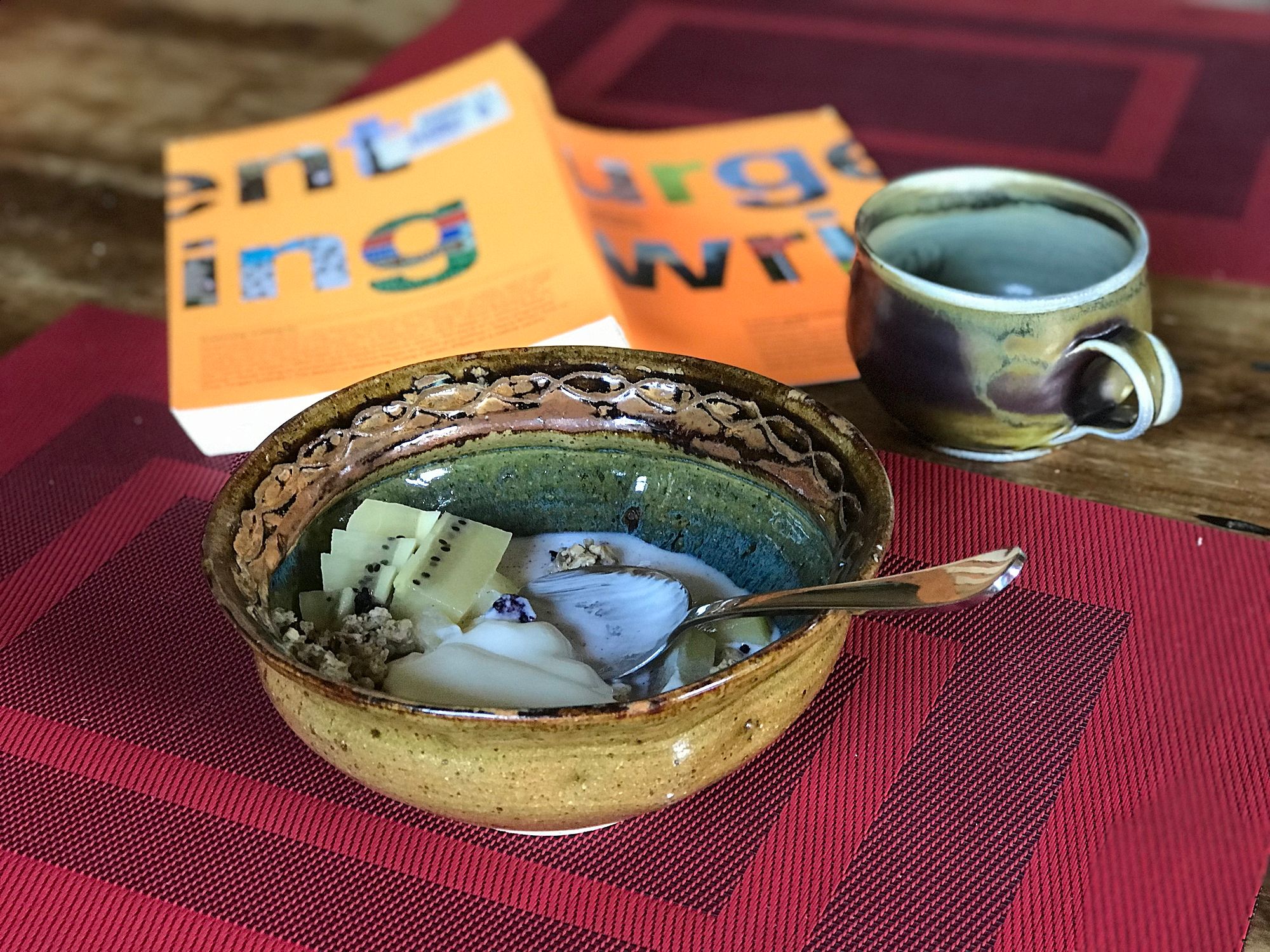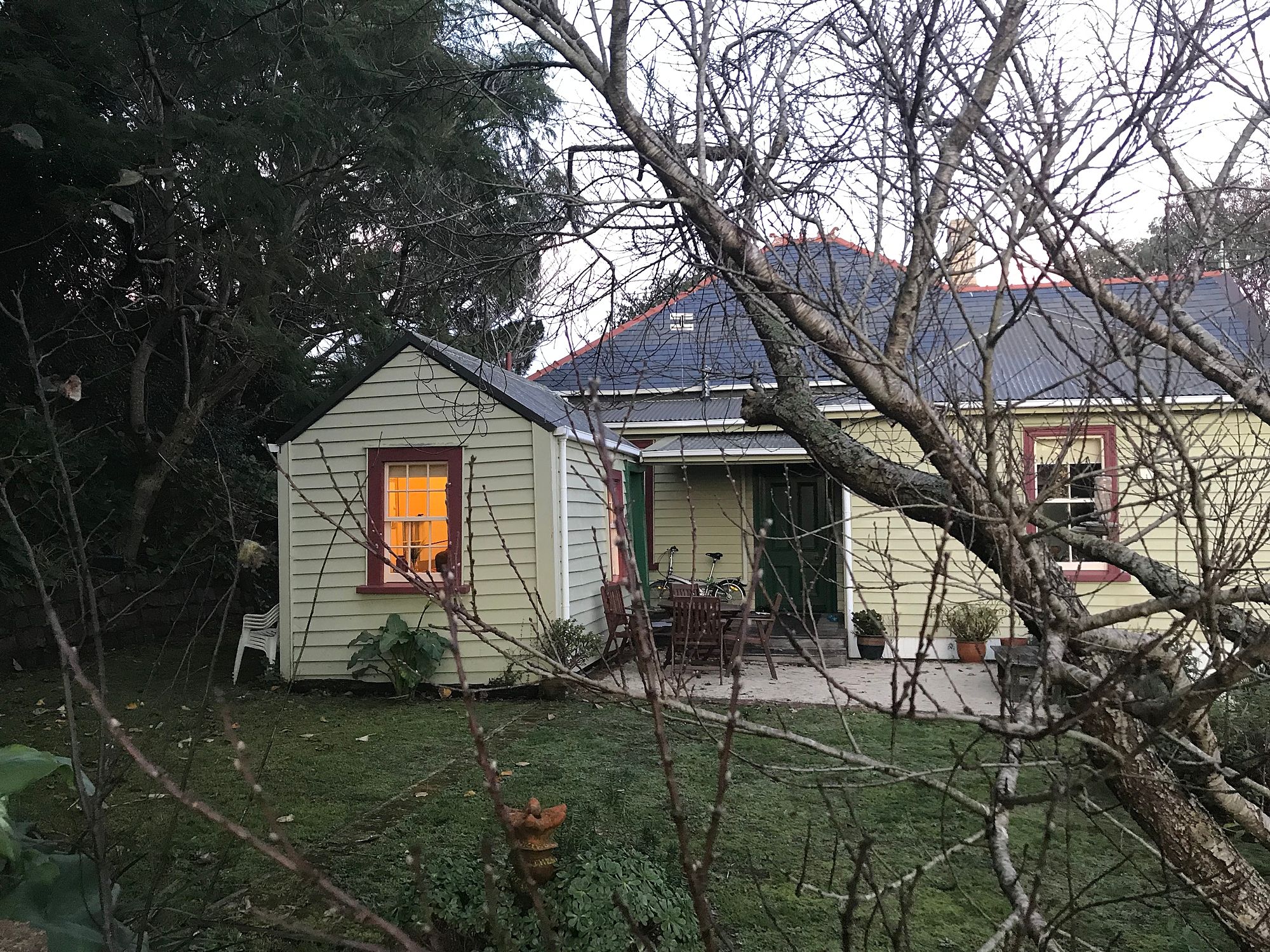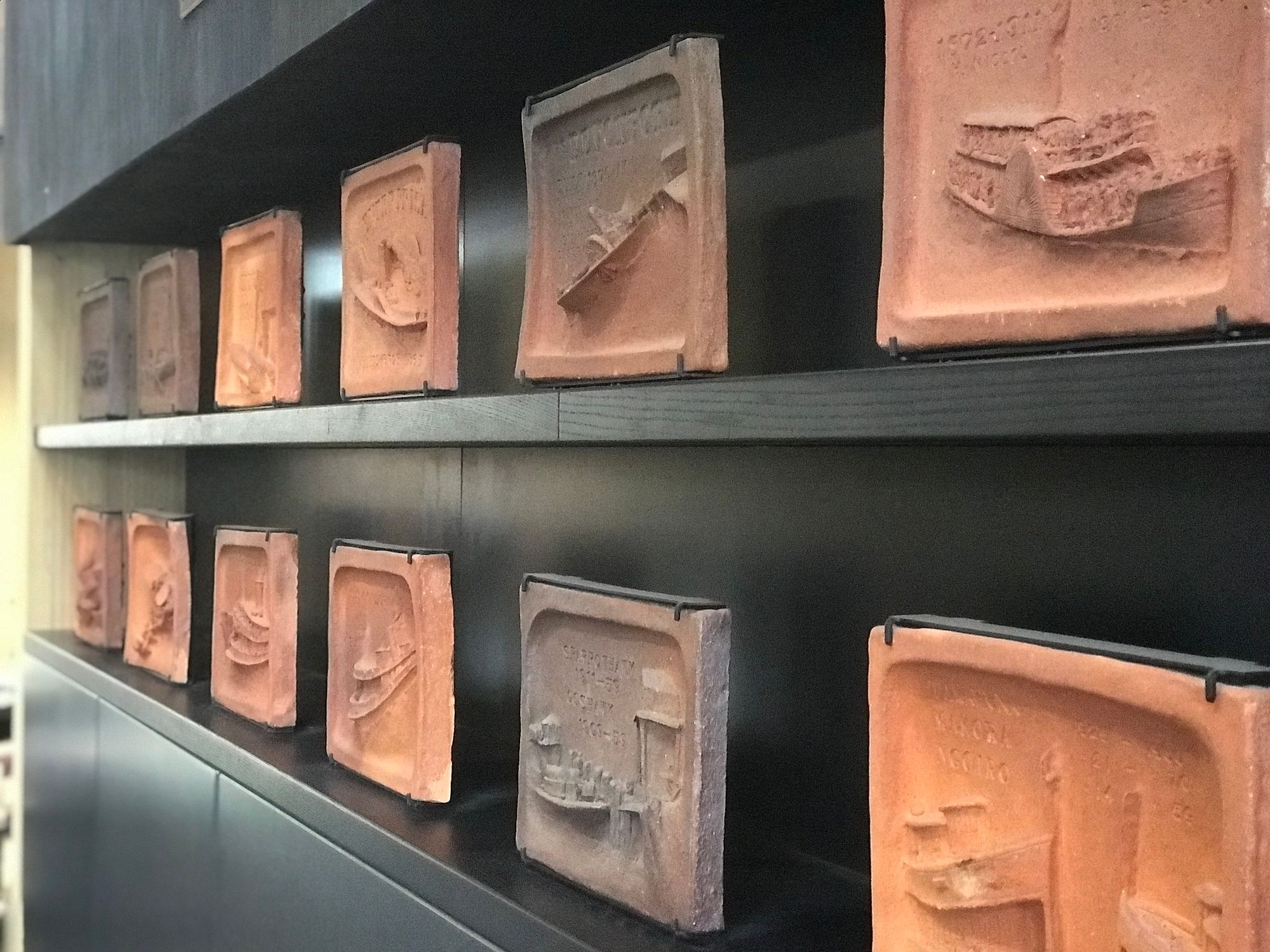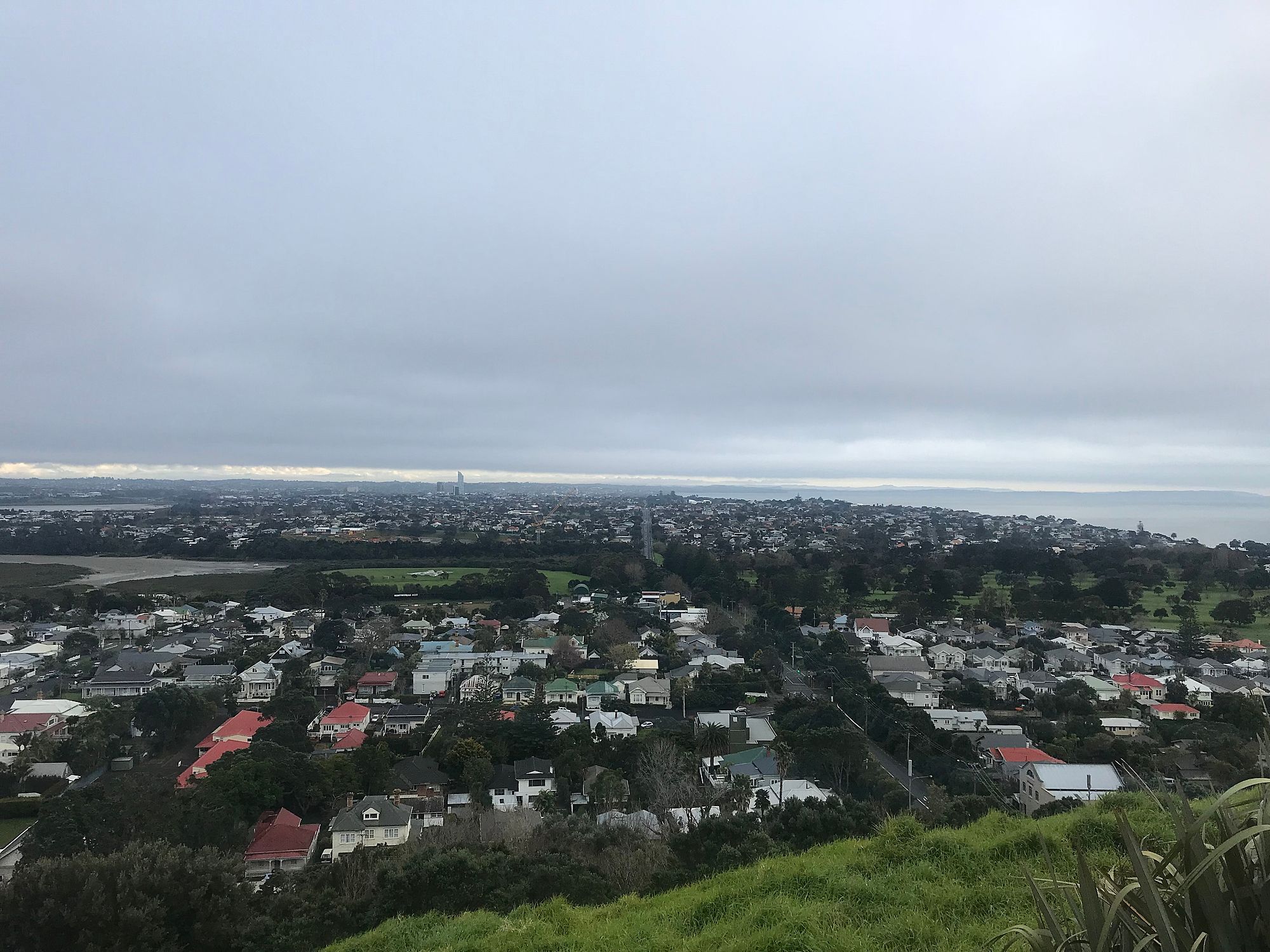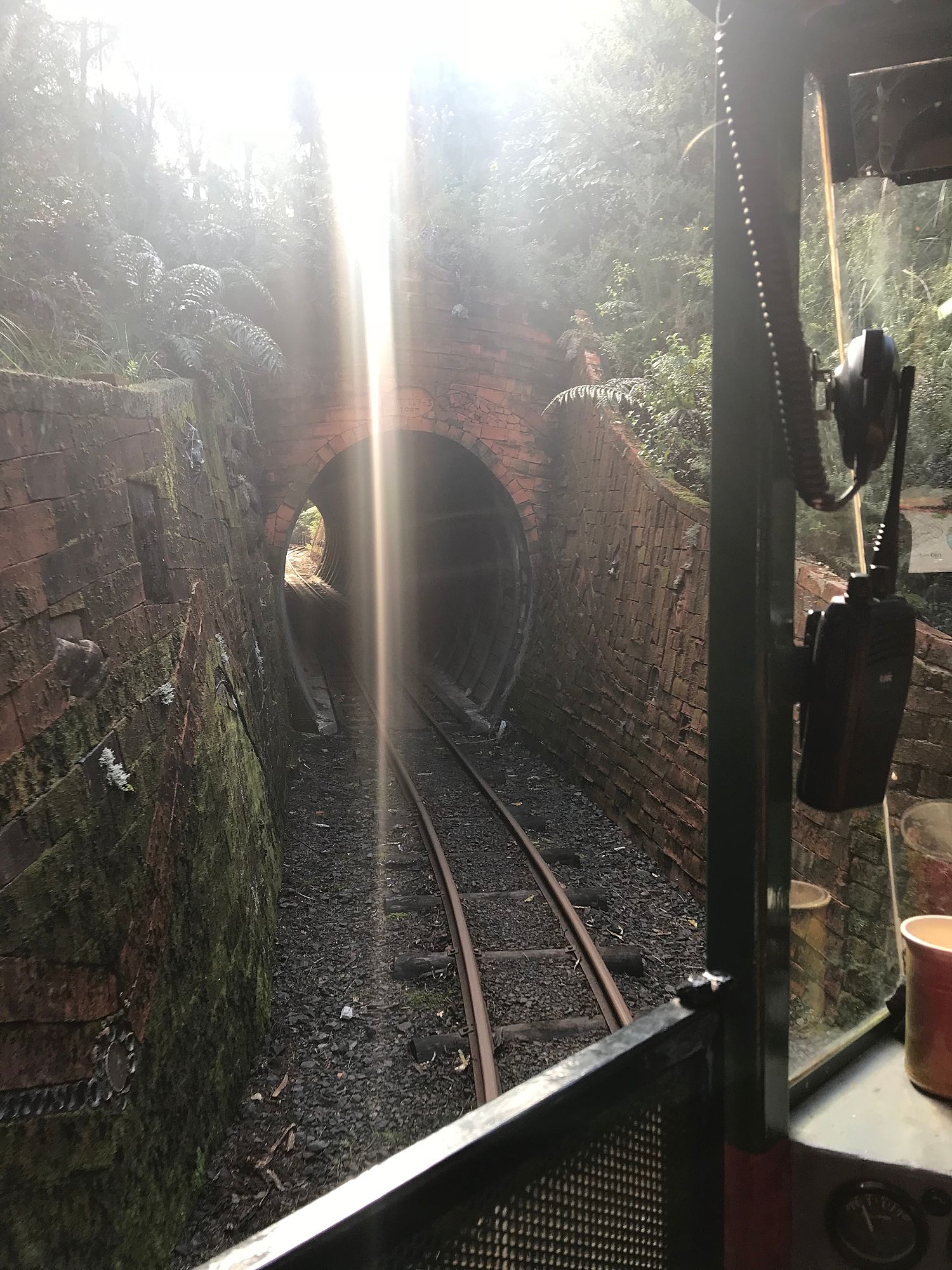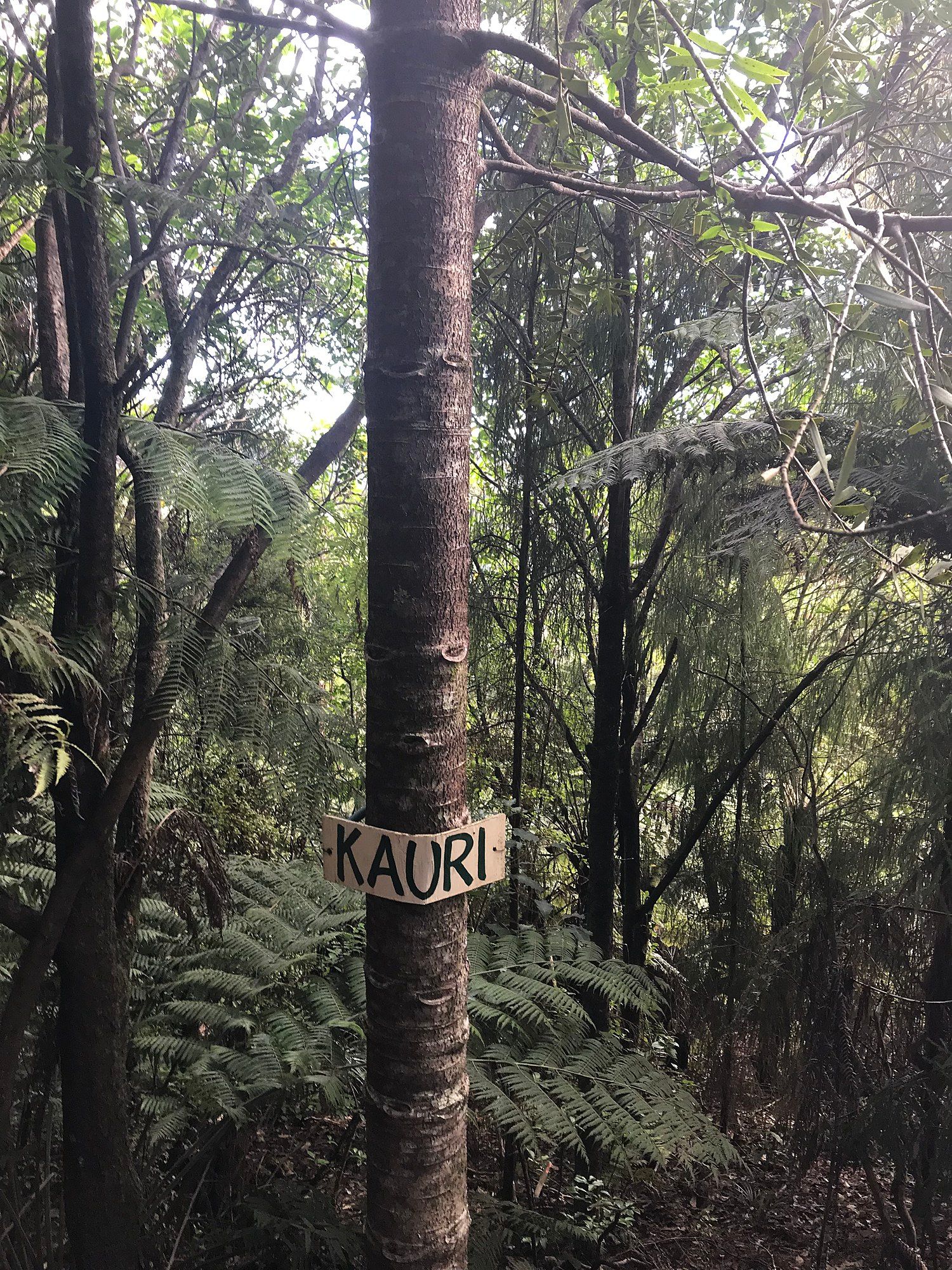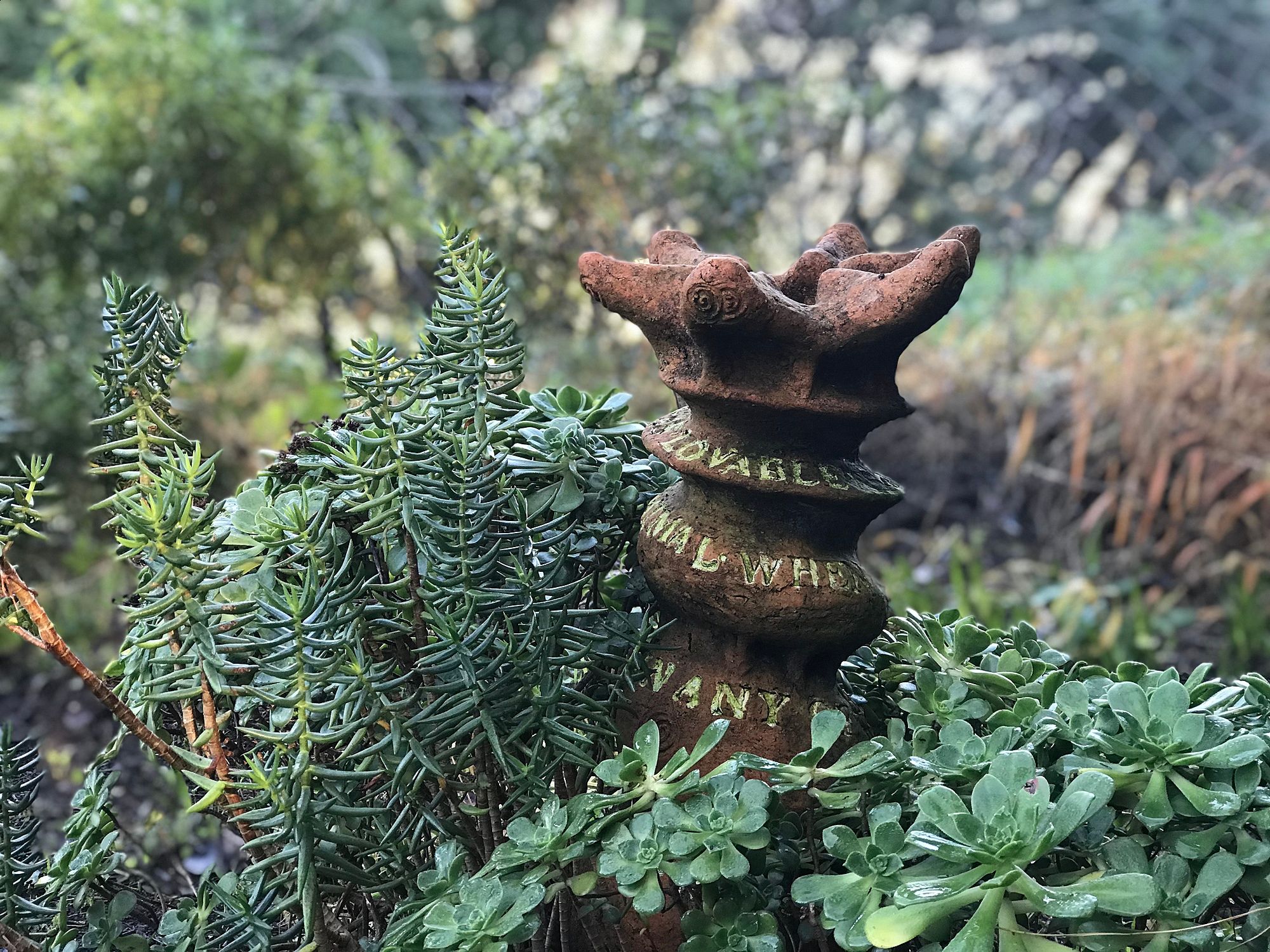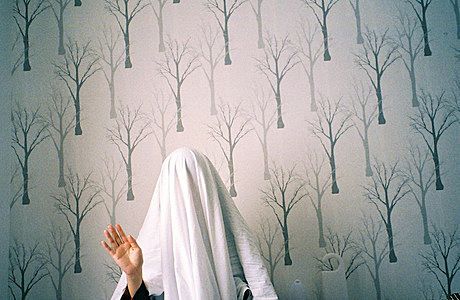Barry Brickell – A Wrerter’s Legacy
Nadine Anne Hura on the legacies writers leave, on our relationship to whenua, and on Barry Brickell, who gave back.
Nadine Anne Hura on the legacies writers leave, relationships to whenua, and on Barry Brickell, who gave back.
Everywhere I go in Devonport, I find remnants of Barry Brickell.
In the garden at the Michael King Writers’ Centre (MKWC), where I have been staying, is a lemon tree that he planted one year he was in residence. I’m told he planted a feijoa tree up the back too. The books of poetry and prose he wrote here, on the slopes of Takarunga, seem like an afterthought to the collection of pottery he donated when he left: terracotta sculptures and artwork; handmade cups and bowls which he insisted be used by future residents, not put on a shelf and regarded as ornaments.
Did the man ever sleep, I wonder?
Every morning I select a different bowl, because each one is unique and I want to appreciate them as a way of honouring Barry. The bowls are imperfect and singular, like children, only not as robust. I eat slowly and watch as each spoonful clears away another mound of cereal. Gradually, the milk ebbs and the patterns emerge: earthy greens and smoky blues, tiny abrasions and imperfections, flecks of stone trapped haphazardly beneath the glaze. It makes my breakfast taste more nutritious.
Outside there’s a writer’s studio but I’m too scared to go in there. I can eat from Barry Brickell’s cereal bowls but I am not sure I can sit at the desk where Eleanor Catton wrote her final draft of The Luminaries. It’s her face I see every morning when I open my bedroom door. It hangs in the hallway among a sea of this country’s most prolific and prestigious writers and poets, a kind of visual reminder of why you’re here, should it slip your mind.
I say ‘every morning I eat cereal’ and ‘every morning I step into the hallway,’ but it’s more like lunchtime that I do these things. I emerge sheepishly because I’ve been hunched over my laptop in my bed for 8 hours straight instead of sitting in the ergonomic office chair waiting in the studio. I feel guilty and sore at the same time. My back is killing me and I think I’m getting bedsores. But Eleanor’s cool about it. Her expression says: ‘Just do you, babe, just do you.’
Sometimes, when no-one’s around, I go into the writer’s studio, but I keep the door open just in case I get trapped in there with some grandiose idea about writing a book. I learned caution from Terry, who I met last year at Ratana Pā. Terry tried to teach me how to swing the double long poi in one hand. He insisted I could do it. I insisted I couldn’t. He was resplendent in a yellow tracksuit and matching woollen hat he’d crocheted himself and the fact of his unwavering faith in me made me feel excited and dangerous all at once.
Terry slept in the wharenui surrounded by his stuff. In the morning, after karakia, he’d heave himself up to join the exercise classes but instead of doing lunges, he’d swing his poi. It was magnificent to watch. He was a man-helicopter, only graceful. His wispy silver hair stood out from the side of his head as if he was plugged into a higher source. The poi moved in time with the music and I was mesmerised not just by the movement, but by the expression on his face. If anything, he looked bored.
Terry and I bonded in the wharekai over fry bread and golden syrup. We talked about yarn and discussed our favourite patterns for marae slippers. When he passed me the poi and explained the basics, it sounded incredibly simple.
It wasn’t.
Terry, losing patience, goes “The trouble is you’re looking at the poi. You’ll never do it if you’re looking at the poi. You need to look past the poi and just concentrate on the movement of the wrists.” He was right, of course. As soon as I stopped trying to swing the poi, as soon as I stopped thinking about the poi, they began to swoop around each other in perfect, graceful arcs. Me, who can’t even pūkana respectfully, swinging the double long poi!
I dropped them as soon as I realised.
Terry’s the reason I continue to write in bed, or on my phone while riding my bike (it’s possible), or at the kitchen table in view of Barry’s lemon tree. Motion is important. It’s easier to concentrate on the movement of the fingers hitting the keyboard than it is to write a book.
I think Barry would respect this. He came up with the word ‘wrerting’ to describe his writing process: bending and reshaping words, in the same way that iron is wrought to form a railway. His poem “Wrerter’s Retreat” is like a Wikihow for Writers in Residence:
If you are a writer,
Freedom from writing
Is essential
This must be a universal rule
That applies
To any pursuit of any imagined goal
There is a precision,
In eyeing up things.
But how you eye them up is more important.
I pocket his words and head out on my bike. I want to know the stories of this place. I’ve read the information about the Signalman’s house, now known as the Michael King Writers’ Centre, but there are too many gaps. The centre is full of books, and though a great number have been written here on this hill, most of them are about other places.
Barry was a person who liked to get deep into the places he visited. He once took a journey into the King Country, through the Central Volcanic Plateau, and described the experience as spiritual. It became the inspiration for a series of low-relief terracotta tiles called A Pilgrimage: The Stations. He was deeply affected by the beautiful, brooding landscape, but also by the historical knowledge he gained. Referring to Te Rohe Pōtae, the area of land now encompassing National Park, Barry wrote:
‘I have always felt that Te Heuheu’s gift requires more atonement and respect than is given by the present official culture.’
Judging by how Barry writes about this mural in his book Plastic Memories, I get the sense he was aware of the potential for his work to be viewed as cultural appropriation. He didn’t feel comfortable about selling the work. Considering it was the 80s, a period when the commodification of Māori art was fair game, I think his instinct for caution says a lot for the guy. On completion, he insisted that each of the 15 tiles (stations along the Main Trunk Railway) be displayed together as one work. He also went to great lengths to ensure that detailed information about each of the tiles travelled with them so that the historical narrative that inspired them would not be lost.
The narrative was lost, though. The tiles themselves were eventually gifted to Ngā Tapuwae College in Auckland, but following a ‘difficult period of misunderstanding,’ possibly due to the disappearance of the accompanying information sheet, the work was put into storage and wasn’t brought out for several years.
Barry’s pilgrimage through the King Country taught me a few things. For example, the reference to ‘Te Rohe Pōtae’ is a term that has been used historically to indicate the area of a Chief’s authority. It’s a hat, thrown down on a map, the thrower claiming domain over the area the hat covered. In Barry’s notes, he attributes the term to Te Heuheu rather than the more commonly accepted King Tāwhiao, suggesting his research may have had some gaps. Regardless of what’s missing, the word ‘gift’ stands out.
Is that the same word that mana whenua would use, I wonder?
Is that the same word that mana whenua would use, I wonder?
The same curiosity pricks at the edge of my conscience when I think about the Michael King Writers’ Centre. By what turn of good fortune or astute planning has this sanctuary on the hill been carved out for the benefit of someone like me? It's a beautiful old villa with high studs, stained glass doors, and a wrap-around veranda looking down on Devonport and across the harbour to Auckland. From the window in the library you can watch the comings and goings of the ferries and frigates and cruise liners. The English translation of its name, Tāmaki-desired-by-many, couldn’t be more accurate. It's breath-taking.
The house is leased to the MKWC by the North Shore City Council. Prior to that it was the home of a number of signalmen. Their job was to run messages up the flagstaff on the summit to communicate with supply ships arriving from Australia, England, the world. I suppose not much has changed, except now everything’s automated. Flagstaff dismantled, there's no need for a signalman’s house anymore. The writers moved in. But on the summit, the rusty scars of colonial years remain: the empty base of the flagstaff, a patch of toadstool-coloured air vents from the reservoir below, and gun pits and bunkers from the days the mountain was used as a military vantage point.
Before settlers, it all belonged to Māori. Stories of occupation, alliances, migration and conquest mean that a total of thirteen iwi now lay claim to this whenua. The whenua changed hands in a series of land transactions in the 1840s, though I suppose the truth all depends on the words you choose: ‘lost’, ‘sold’, ‘stolen’ or ‘gifted’. Whatever the spin, the result is the same: not many Māori come up here anymore. That’s what Pāora Puru tells me. We’re standing at the top of Takarunga, looking out across the harbour towards the Sky Tower and beyond. He's a kaitiaki for the Tūpuna Maunga Authority, the collective that co-governs fourteen of Tāmaki's ancestral landmarks, or volcanic cones.
Turning 360 degrees, Pāora names every one. In the general direction of Cheltenham beach he points to Takararo (hill below), sister to Takarunga (hill above). I can’t see anything. He explains there is nothing to see because there is nothing to see. Takararo, along with Takamaiwaho (hill outside), was quarried away over the course of 80 years in the 20th century. Mountains hauled out of existence by the truckload, to help pave Auckland’s sprawling motorways. When mana whenua's tūpuna were finally returned in 2014, some couldn’t be. I look at the undulating golf-course beyond where Takararo ought to stand and try to paint the little hill back into the landscape with my imagination. I can’t.
Takakore. Hill no more.
The rapid expansion of Auckland is probably one of the reasons Barry decided to gap it. He grew up in Devonport, just around the corner from the Michael King Writers’ Centre, but the urban life of high consumption didn’t suit him. He nicknamed Auckland ‘Yackland’ and moved away as soon as he could. He preferred the bush, nature in all its glory, purchasing a piece of land at Driving Creek not far from the township of Coromandel. I visited Driving Creek years ago when my kids were small. We went for a ride on the narrow-guage railway that wends its way up the steep hillside through native bush. I didn’t fully comprehend then that the railway was built primarily as a means of accessing clay for pottery. I remember absorbing the information about the railway’s builder in a disembodied way, an eccentric character called Barry Brickell. Engineer. Potter. Tree-planter. I didn’t know then that he was a writer and a philosopher. I didn’t know lots of things.
Returning to Driving Creek more than a decade later, on the second-to-last day of my residency, felt like something I needed to do. During the course of my two weeks at the Michael King Writers’ Centre I’ve spent many evening hours reading Barry's books while drinking tea from his terracotta cups. His words are full of wisdom:
Sometimes you have to make things crooked before you can see them straight.
And humour:
At age 74
It’s time I started
Looking
For a proper job,
So my parents
Keep telling me.
On the two hour ferry trip from Devonport to the Coromandel I read a thin volume from 1969 describing the history of the area. It states simply that the vast kauri forests that once blanketed the Coromandel Peninsula were exhausted by 1922. It’s such a sad, strange word to use. Exhausting indeed, to be struck from the earth to be used as planks and spars and boardwalks in foreign countries. In one of Barry’s books, he soberly states that for all the kauri that was milled from the Coromandel, far more was simply burnt off to make way for farms: the price of a dream for a land covered in sheep.
No doubt this is why Barry was so determined to put the kauri back. Since 1973, he and his supporters have replanted more than 27,000 native plants in Driving Creek, at least 9,000 of them kauri. At the same time, he used the environmentally questionable Pinus Radiata as fuel for his kilns. As he worked, the railway continued to grow, snaking its way slowly up the scrub-covered mountain hauling clay out and baby natives in. Eventually, the railway opened up to tourists and the modest influx of cash helped save the rapidly declining economy of the Coromandel, while also allowing the dream of native regeneration to expand. The conservation serves the people serves railway serves the clay serves the pottery – and the pottery, of course, serves the art. It’s a switch-back system of radical self-sufficiency fuelled by the values of a man well before his time.
For all of these reasons Barry is both an easy subject to write about and a difficult one. So much material! But where to start? It's a recurring theme in Barry’s own poems:
Why do you
Keep on
Telling me
I’m something,
That I’m not?
Nottapotta
Not-an engineer,
Not an artist
Nottawriter,
Not even-
A real man-
Just a wrerter,
A ceramiccissist,
Mudslinger
And-An oddity,
Which is-
Closer,
To the actual
Truth.
I suppose it’s possible to start at the end, with Barry’s legacy. There’s his pottery, of course, and his art. There's books and words and sculptures and lemon trees and railway tracks and hundreds of low-relief tiles depicting our nation's history through narrative. You can find Barry’s murals and all over the country.
But there’s more than what he left behind. There’s also what he put back: 27,000 native trees for a start. How many of us can say that? For a man who made such an impression on the world in so many different facets of it, his environment impact was surely negligible.
Writers leave a legacy, too. The hallway of the Michael King Writers’ Centre reminds me this every day. The faces of Janet Frame, Katherine Mansfield, Michael King and Eleanor Catton look pensive but casual as each new resident arrives, suitcase in hand, inspiration in mind. Strangely, Barry’s photo isn’t up there, and I wonder if that’s an oversight or whether he declined, not wanting to put off other writers with a gaze that suggests that writing is a pursuit not to be taken too seriously. His memoir would suggest that’s right:
‘I don’t want to be elevated: I want to be a workman. Whether pots, the railway, it’s all the same thing. Yes the railways is very successful. But in the early days everyone complained I was wasting my time building the trainline, when I should have been making pots. Well, I just kept on producing, pots too.’
In the afterword of Barry’s memoir, facetiously titled “Doggerel”, his editor David Craig, writes that Barry was pessimistic about the reception it would receive from the literati. Perhaps he’s always been seen as mainly something else: not a real writer, but more of a potter or a railway enthusiast or lemon-tree planter. I suspect Barry would be happy to be seen as a fusion of all of these things; a fusion of opposites, mechanical and natural, complementing each other in aesthetically pleasing ways.
The idea that my own photo might hang on the wall in this house one day makes me feel excited and dangerous all at once, but I know the trick is to ‘just concentrate on the movement of the wrists’. In fact, discovering Barry makes me think I should be thinking about other things altogether, like the legacy of things removed: resources pillaged into oblivion so we can no longer see them. Whole mountains and forests erased from the landscape in a few generations.
Given how much he cared and how hard he worked, you’d think Barry would be proud of all he achieved but true to form, when asked, he said: ‘I’m not proud of anything I’ve done. It’s not finished, for a start.’
I’m not proud of anything I’ve done. It’s not finished, for a start.
Barry passed away in January 2016, aged 80, at home in Driving Creek. He worked right up until the final two weeks of his life. This is what the train driver at Driving Creek tells me. On the day he was buried, local shop owners flicked the signs on their doors to closed and headed across town to his memorial service. Meanwhile, Barry’s family and friends climbed aboard his favourite train to accompany him on his final journey. He lies not far from Hoki Mai station on Driving Creek with a kōwhai tree standing above him.
I write this from the studio. It’s my final day here and I’ve finally sussed out how to be in this space with the door closed. I’ve fed Whiti's cat and I’m waiting for my Dad to pick me up and drive me to the airport. In the garden, I can see one of Barry’s sculptures covered in lichen, peeking out through the plants – art and imagination at one with nature. I want to take something away but I know it’s more important to leave something behind.
Instead, I select one remnant of Barry Brickell, one final fragment of doggerel, that I can put back into the world:
In vital life we use our environment. To do this needs broadness in concepts, tolerance, human awareness of others and oneself. Awareness of textures, colours, forms and, most important, the spirit or feeling of things. This is how we can extract the maximum form the very minimum of substrate. This country is big, powerful and exciting. In the raw it is rough, formidable, awe-inspiring – absolutely beautiful. Let us have these impressions soak steadily in, making us newer for what we do have. Then and only then, will we begin to work in a vital way.

